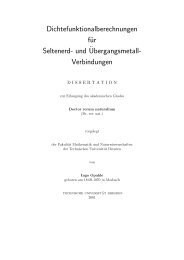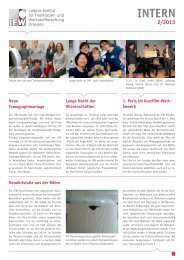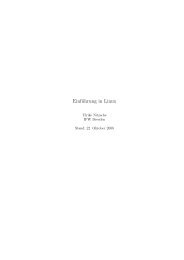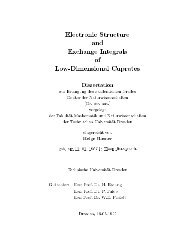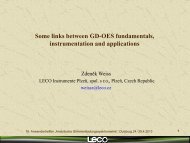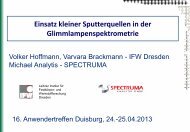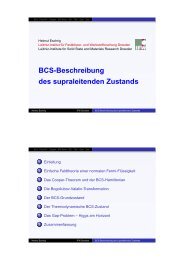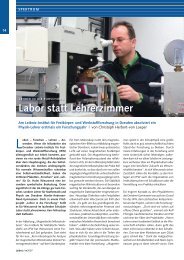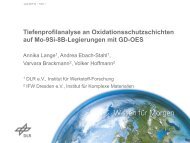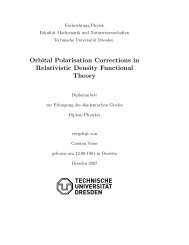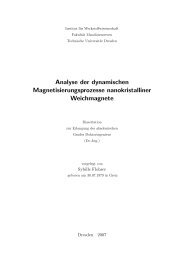ALBERTO BOLLERO REAL
ALBERTO BOLLERO REAL
ALBERTO BOLLERO REAL
Create successful ePaper yourself
Turn your PDF publications into a flip-book with our unique Google optimized e-Paper software.
5.1 Nanocrystalline powder processing<br />
earths are chemically very reactive. The high thermal conductivity of copper and the high<br />
surface velocity of the wheel, v s , are responsible for the high cooling or quench rate (about<br />
10 6 K/s) attainable by this technique, and it can be varied by changing v s which, in a first<br />
approximation, is directly proportional to the cooling rate. There is a strong dependence of<br />
the coercivity on the wheel speed. The melt-spun ribbon is magnetically isotropic and<br />
forms the basis of a range of commercial magnets (so-called “MQ-powder: MQ1”). There<br />
are various production routes as, for example, hot-pressing (dense isotropic magnets:<br />
MQ2) with subsequent die-upsetting or backward extrusion (dense anisotropic magnets:<br />
MQ3) and polymer resin bonding techniques [89-93]. A more detailed explanation about<br />
the hot deformation process will be given in Section 5.1.4.<br />
Ribbon flakes in this study were prepared changing the parameters (v s = 30 - 40 ms -1 )<br />
according to the composition to obtain a partly amorphous structure. Heat treatment of the<br />
flakes was carried out at temperatures between 600 and 800 °C for 15 min under vacuum at<br />
pressures lower than 10 -4 mbar.<br />
5.1.2 High energy ball milling<br />
Mechanical alloying was developed in the 1970s as a technique for dispersing<br />
nanosized oxide inclusions into nickel based alloy powders [94]. Yeh et al [95] were the<br />
first demonstrating an amorphisation by solid-state reaction using diffusion for the reaction<br />
of hydrogen with crystalline Zr 3 Rh. Schwarz and Johnson [96] established the possibility<br />
of applying this method to metallic systems. Schultz et al [97] demonstrated for the first<br />
time that Nd-Fe-B magnets could also be produced by mechanically alloying Nd, Fe and B<br />
and annealing the amorphous phase. During the last twenty years mechanical alloying has<br />
been widely used in laboratories to prepare a variety of alloy powders because of its<br />
versatility. It is performed in a high-energy ball mill, under argon, starting with powders of<br />
the constituent elements. When the balls collide, the powder particles are trapped, being<br />
heavily deformed and welded. In the beginning, powder with a layered microstructure is<br />
produced with non-deformable powder particles embedded in the welded interfaces. In the<br />
case of Nd-Fe-B powder, the layered microstructure will be formed of Fe and Nd with the<br />
submicron undeformed B particles embedded in the Fe/Nd interfaces [98]. It is necessary<br />
35



